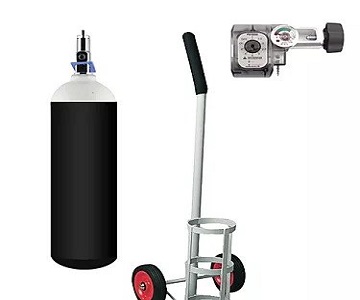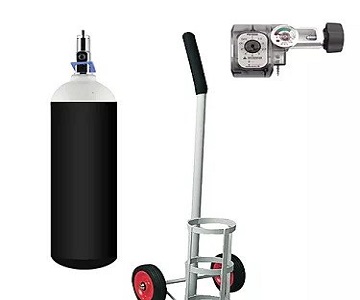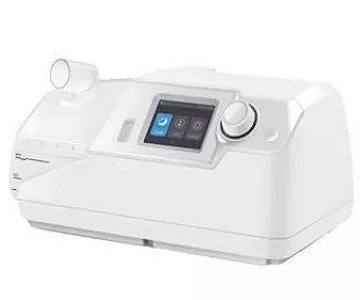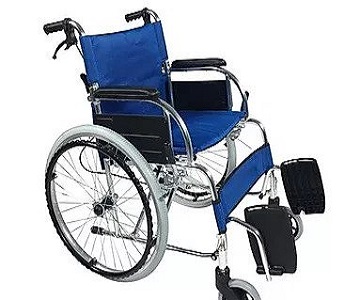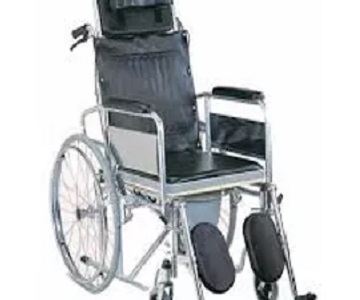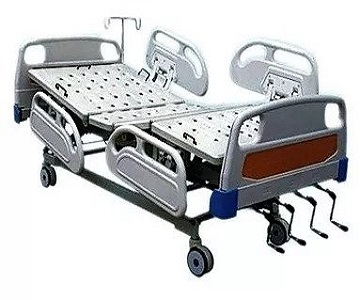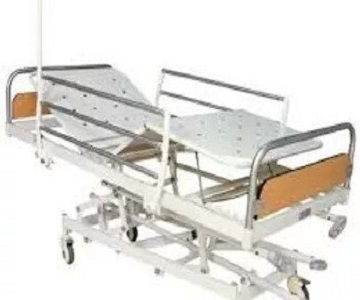Medical Equipment
The use of medical equipment in hospitals and clinics is of utmost importance. This equipment enables medical professionals (such as technicians and doctors) to assess a patient’s medical conditions. It is therefore important to understand what different types of equipment are available. Different types of equipment offer different functions and they work seamlessly together to ensure that patients are properly treated.
- Diagnostic Equipment
- Durable Medical Equipment (DME)
- Treatment Equipment
- Life Support Equipment
- Medical Laboratory Equipment
Diagnostic Medical Equipment
Diagnostic medical equipment is any type of equipment or tools used in a hospital setting for the sole purpose of diagnosing a patient’s condition. Based on the symptoms described by the patient, a diagnostic test is performed using the appropriate equipment to evaluate the patient internally. The doctor or technician is looking for any abnormalities in the affected organs or parts of the body that are causing the symptoms to be exhibited.
Below are some of the most common types of diagnostic equipment used in laboratories and medical clinics:
Medical imaging machines – Medical imaging is a type of technology that is used to create visual representations of the human body’s interior. The visual image produced by the equipment is used for clinical analysis and medical intervention. There are many medical imaging equipment, such as radiography (X-ray machine), computed tomography (CT scan), magnetic resonance imaging (MRI scan), ultrasound, and echocardiography, to name a few.
Aside from medical imaging machines, there are other medical devices used for diagnosing patients. Some examples include patient scales, stethoscopes, dopplers, and pulse oximetry.
Durable Medical Equipment (DME)
This type of medical equipment is used mainly for providing therapeutic benefits for certain conditions or illnesses. The use of this equipment must be prescribed by a physician, which is designed to serve a medical purpose. It is a long-term and reusable device that can be used in the hospital or at home for patient care. There are several types of durable medical equipment such as the following:
- Manual wheelchairs or electric wheelchairs
- Hospital beds
- Walkers, crutches, canes (or any similar type of mobility assistive equipment)
- Traction equipment
- Pressure mattresses
- Insulin pumps
- Breast pumps
- Nebulizers
- Patient Lifts
- Bili lights and blankets
- Kidney machines
- Stationary or portable oxygen tanks
- Oxygen Concentrators Ventilators
The term ‘durable’ is derived from the fact that these types of equipment have been tested for quality. They are designed to provide support for the safety and comfort of the patients. They should be able to deliver just that. Some of the common features of durable medical equipment include non-slip features and load-bearing strength. Since this equipment is prescribed by the physician for the benefit of the patient, the cost of acquiring one is often covered by health insurance plans.
Treatment Equipment
Treatment equipment is any type of medical device or tool that is designed to treat a specific condition. It utilizes modern technology in order to address any abnormalities to restore function in the affected organs or tissues within the body. This can also include the surgical supplies designed to provide treatment for certain conditions that require surgical intervention.
Below are common examples of medical treatment equipment that you will find in hospitals and clinics:
- Infusion Pumps – This type of treatment equipment is used in a hospital setting. It is designed to infuse medication, fluids, and other forms of treatment to the patient’s circulatory system. This machine is used intravenously but you can also find epidural or arterial infusions. This machine is reliable because it injects controlled amounts of fluids into the patient’s system over a given period of time.
- LASIK Surgical Machines – The use of LASIK technology is used primarily for the treatment of eye conditions. It is designed for use on patients suffering from myopia, hyperopia, or astigmatism.
- Medical Lasers – The laser is a revolutionary technology introduced in the medical field for the treatment of various medical conditions. It is a device that emits a wavelength of electromagnetic radiation for clinical applications. These wavelengths vary when it comes to energy level and pulse duration. These settings are to be determined by the attending physician during treatment.
Diagnostic scopes
- Surgical caps, gowns, gloves, or glasses (for the surgical team)
- Gauze and drapes (for patients)
Life Support Equipment
As the name implies, life support equipment are those medical devices intended to maintain the bodily function of a patient. Without life support, it will be difficult for the patient’s organ systems to function on their own. There are a variety of life support machines in the medical field today, such as the following:
- Heart-lung Machines – Also known as cardiopulmonary bypass (CB) devices, this type of equipment temporarily functions as the heart or lungs of a patient during surgery. It facilitates in the circulation of blood and oxygen throughout the patient’s body. It is known as a form of extracorporeal circulation.
- Medical Ventilators – This type of device is designed to move breathable air in and out of the lungs. It is used on patients who have difficulty breathing, or who are incapable of delivering an adequate supply of oxygen throughout the body. There are two types of medical ventilators. One is hand-operated using a bag valve mask. The other is run and operated by a computer. You will find this machine used in intensive care unit patients or home care patients.
- Dialysis Machine – Dialysis is the method of removing excess solutes or toxins from the blood. It is used on people whose kidneys have been damaged and are incapable of performing these functions. It is a type of renal replacement therapy. Dialysis machines are essential for those who have kidney damage or lost kidney function.
- Incubators – An incubator is a medical apparatus used for neonatal intensive care. It is designed to mimic the environmental conditions suitable for newborn babies. It is often used in conjunction with a few other medical equipment such as an oxygen hood and ventilator.
Medical Laboratory Equipment
The use of medical laboratory equipment is often seen in medical clinics or diagnostic laboratories. These types of equipment are intended for the analysis of blood, urine, genes, and other biological material. Below are the most common examples of medical laboratory equipment used in the medical field:
- Blood gas analyzers
- Chemistry analyzers
- Blood collection supplies
- Electrolyte analyzers
- Differential counters
- Drug testing analyzers
- Coagulation analyzers
- Hematology analyzers
- Urinalysis analyzers
- Microbiological systems
As medical technology continues to develop, you can expect that there will be more types of medical equipment emerging. This is good news to patients who can expect quality medical care and diagnosis utilizing the latest in medical technology.
Covid-19 Supplies Announcement 01/05/2020
NTP Healthcare has sourced KN-95 Mask, Hand Sanitizer and Oxygen concentrators to help battle the Covid-19 outbreak. Here is our current inventory or expected arrival dates:
- KN-95 Mask: Available 5/05/20 Single pieces are INR400 & Bulk Order @INR375 (100 minimum)
- Surgical Mask: Available Today Single pieces are INR16 ea INR14 100 Pcs. or more
- Disposable Gowns: Available 5/07/20 Single pieces are INR850.00 each
- Hand Sanitizer: Available Today 8oz gel bottles are, 32 oz gel are, 2 oz amber glass spray
- Oxygen Concentrator: Available Today- Requires RX new stationary units, new portable units
- Infrared No-Touch Thermometers– Available 5/07/20 (limited quantity) INR5000
Our Hospital Partners

Fortis Hospital, New Delhi
Heart Surgery,Cancer Treatment, Bariatric Surgery, General Surgery, Transplant Surgery, Joint Replacements Surgery, Organs Transplant, Spine Neurosurgery,Cochlear Implant & ENT Surgery

Wockhardt Hospital Mumbai
Heart Surgery,Cancer Treatment, Bariatric Surgery, General Surgery, Transplant Surgery, Joint Replacements Surgery, Organs Transplant, Spine Neurosurgery,Cochlear Implant & ENT Surgery
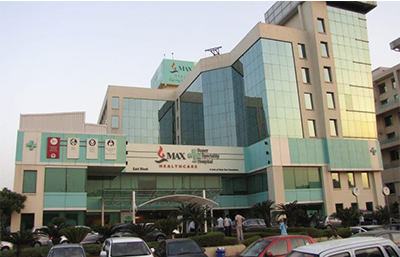
Max Hospital, New Delhi
Heart Surgery,Cancer Treatment, Bariatric Surgery, General Surgery, Transplant Surgery, Joint Replacements Surgery, Organs Transplant, Spine Neurosurgery,Cochlear Implant & ENT Surgery

Lilavati Hospital, Mumbai
Heart Surgery,Cancer Treatment, Bariatric Surgery, General Surgery, Transplant Surgery, Joint Replacements Surgery, Organs Transplant, Spine Neurosurgery,Cochlear Implant & ENT Surgery

Manipal Hospital,Bangalore
Heart Surgery,Cancer Treatment, Bariatric Surgery, General Surgery, Transplant Surgery, Joint Replacements Surgery, Organs Transplant, Spine Neurosurgery,Cochlear Implant & ENT Surgery

Medanta Hospital
Heart Surgery,Cancer Treatment, Bariatric Surgery, General Surgery, Transplant Surgery, Joint Replacements Surgery, Organs Transplant, Spine Neurosurgery,Cochlear Implant & ENT Surgery

Artemis Hospital
Heart Surgery,Cancer Treatment, Bariatric Surgery, General Surgery, Transplant Surgery, Joint Replacements Surgery, Organs Transplant, Spine Neurosurgery,Cochlear Implant & ENT Surgery
